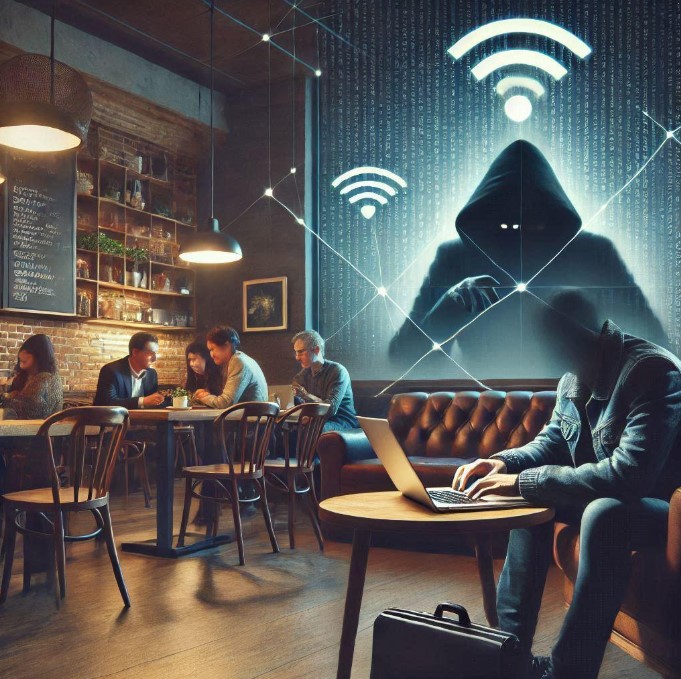Introduction
In today’s connected world, travelling is easier than ever. Whether for business or leisure, we rely heavily on our devices to stay in touch. But travelling also brings risks, especially when it comes to communication. From public Wi-Fi to social media, the ways we share information can expose us to cyber threats. This blog will guide you on how to protect your security and improve your communication skills while travelling.
Why Traveling Makes Communication Risky
Public Wi-Fi Dangers
Public Wi-Fi is convenient but risky. It’s often unprotected, making it easy for hackers to access your data. In fact, approximately 70% of public Wi-Fi networks are unencrypted, which means that any data transmitted over these networks is vulnerable to interception by cybercriminals. A staggering 30% of identity theft cases occur due to unsecured public Wi-Fi connections, highlighting the importance of being cautious when accessing sensitive information on these networks. Always think twice before connecting to public Wi-Fi (Kaspersky, 2024).
Social Media Sharing
Social media is a great way to share your adventures, but it comes with risks. Over-sharing can reveal your location, travel plans, or personal information. This can put you in danger, especially if someone uses this information to target you.
Losing Your Devices
When travelling, losing your phone or laptop is not just an inconvenience—it can expose all the data stored on your device. This includes personal messages, passwords, and business documents. Protect your devices with strong passwords and keep them secure at all times.
The Challenges of Communicating While Traveling
Using Unsafe Communication Tools
While travelling, you may use unfamiliar apps or tools to communicate, including messaging apps and email platforms. These tools might lack the security needed to keep your data safe. A study found that 40% of public Wi-Fi users have experienced malware infections after connecting to unsecured networks (Gregory, 2016). This highlights the necessity of choosing secure platforms and being vigilant about network security.
Nonverbal Communication Risks
Face-to-face communication also carries risks. In unfamiliar cultures, body language, facial expressions, and eye contact might be misinterpreted. Misunderstandings can lead to awkward or even unsafe situations.
Local Cyber Threats
Cybersecurity threats vary by region. In some places, data privacy laws are weak, and you may unknowingly use unsecured networks. Research the local cybersecurity environment before your trip.
Read more: Common Video Conferencing Mistakes and How to Avoid Them
Common Mistakes in Communication Security

Weak Passwords
Many travellers use simple or repeated passwords. This makes it easy for hackers to access accounts if your device is compromised. Create unique, strong passwords for every account, and change them regularly.
Skipping Two-Factor Authentication (2FA)
Two-factor authentication adds an extra layer of security to your accounts. It requires a second step—like a code sent to your phone—to log in. Enabling 2FA can prevent unauthorised access, even if someone steals your password.
Unencrypted Messages
If you send unencrypted emails or messages, your information can be intercepted. Encryption tools ensure your messages are safe, even if they’re intercepted by hackers. Use apps that offer end-to-end encryption whenever possible.
Read more: Working from Home: Video Conferencing Tips Made Easy
The Problem With Unreliable Communication Tools
Poor Internet Access
Travellers often rely on inconsistent or slow internet connections. Switching between networks can make it tempting to use unsecured platforms, putting your communication at risk.
Lack of Knowledge
Not everyone knows how to choose secure communication tools. If you’re unsure, research apps and platforms before you travel. Secure tools help you communicate safely, including for business or personal use.
Risks to Your Data While Traveling
Identity Theft
Hackers often target travellers for identity theft. They might steal your personal details, financial information, or login credentials. Once this happens, it’s hard to regain control. Protecting your devices and accounts is the best defence.
Business Risks
Travelers handling business communications face additional risks. A stolen laptop or compromised email can lead to financial losses or reputational damage. Always back up your data and use secure methods to communicate, including encrypted emails.
Tips for Long-Term Travelers

Stay Consistent
Long-term travellers need to make security a habit. Regularly update your passwords, enable 2FA, and use secure networks. These small steps can make a big difference in keeping your data safe.
Avoid Travel Fatigue Mistakes
Travel fatigue can make you less careful. You might reuse passwords, skip security steps, or use unsafe networks when you’re tired. Stay vigilant and plan ahead to avoid mistakes.
Read more: Video Conferencing Solutions for Effective Meetings
How to Improve Communication Skills While Traveling
Master Nonverbal Cues
Body language, facial expressions, and eye contact play a big role in communication. Pay attention to these nonverbal signals when interacting with others, especially in new cultures. It helps build trust and ensures you’re understood.
Learn to Adapt
Travel often involves intercultural communication. Adapting your tone of voice and paying attention to local customs can make others feel comfortable. This also helps you avoid misunderstandings.
Use Social Media Wisely
Social media marketing can help you connect with your target audience, even while travelling. But always balance visibility with security. Don’t share real-time updates about your location or plans.
Start a Blog
If you enjoy writing, consider starting a blog to share your travel experiences. A blog is a safe way to communicate, including posting updates or advice, without oversharing on social media. Make sure to use secure hosting platforms and strong passwords.
Read more: Video Conferencing vs. In-Person Meetings for Businesses
Building Better Communication Habits
Practice Written Communication
Travelling offers a great opportunity to practice your written communication skills. Write clear, concise emails or messages to avoid misunderstandings.
Strengthen Interpersonal Communication
Improving your communication involves more than just words. Focus on nonverbal signals, tone of voice, and active listening. These skills will help you navigate social interactions and build meaningful connections.
Conclusion
Travelling can make communication more challenging, but with the right practices, you can stay secure and connected. By avoiding public Wi-Fi, enabling 2FA, and using encrypted tools, you protect your data from cyber threats.
Don’t forget the importance of interpersonal communication skills, including paying attention to nonverbal cues like body language and eye contact. Whether sharing information online or in person, thoughtful communication helps you build trust and stay safe.
For long-term travellers or anyone interested in starting a blog, focusing on security and adapting to intercultural communication will ensure your journey is both enjoyable and secure. By making safety a habit, you can confidently explore the world while protecting your data and improving your communication skills.
Continue reading: Video Conferencing for Training and Onboarding
References
-
Gregory, M. A. (2016, December). Practising safe public wi-fi - Assessing and managing data-security risks. Research Gate.
-
Kaspersky. (2024). Public Wifi Security - Public Wifi Safety Tips. Kaspersky. Retrieved December 20, 2024.